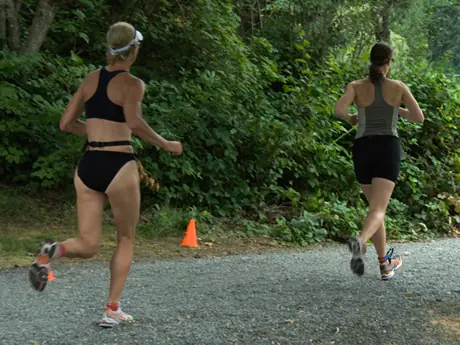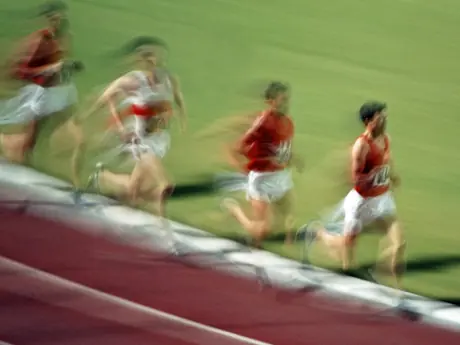
To be a better endurance runner it takes more than lacing up a pair of shoes and heading out the door for a long slow run. It also means you need to become more efficient. In other words, you need to conserve energy by improving your running speed skills.
Like any new skill, technique must become part of every run session, and not simply get relegated to an occasional workout. Much like learning to play the piano, practicing scales and memorizing chord structure is what takes you from hack to virtuoso; same goes for running.
More: 5 Workouts to Improve Running Mechanics
To crank up your tri-run training, without piling on lots of on extra mileage, here are four simple running speed drills you can build into your training plan for quick results:
1) Count: Running speed is defined as stride rate times stride length. The quickest way to improve your run split is to increase your stride rate, or increase your contact with the ground. The stride rate for elite runners is 180 steps/minute or more and that is your goal—higher is better. The drill to jump your stride rate is simple and is based on the old adage "what you measure improves."
The Drill: Count your steps 2 to 4 times in every run. Do this for 30 seconds. Chances are you'll find that just by counting you'll start to increase your stride rate. Remember, the goal is to move your feet quickly and keep it aerobic; don't sprint.
2) Kick Up Your Heels: If you watch fast runners they all have one thing in common—their heels come up high behind them when they run. Here's how to make this happen.
The Kick-Butt Drill: Five to 10 times in every run, snap your heel up to your butt every third step for 20 counts (10 on each leg). What you'll notice is that you naturally shorten your stride, lean slightly forward, and tend to land mid-foot—all good things for an endurance runner.
3) Add Quick Stuff all the Time: Starting in your early base training it's a good idea to regularly build in some short speed sets.
The Drill (Alactic Sets): Incorporate 5 to 10 short, fast bursts of speed lasting 5 to 15 seconds. To keep yourself from going anaerobic, aim for 7 to 8 seconds. Really focus on cranking up the stride rate to get the most out of these sets.
More: Run Workouts From the World's Fastest Triathletes
4) Active Breathing: This is a great way to get control of your breathing, teach your body to relax, save valuable energy, and calm your mind.
The Drill: After each alactic burst, or after any hard set, take 10 long, slow, deep breaths.
More: How to Control Your Breathing in Training and Competition
For best results do the above running speed drills in the order listed: Start with a kick-butt drill, quickly followed by an alactic burst sprint, and finish with some active breathing. Then just repeat this sequence 5 to 10 times in most if not all of your runs.
For extra credit, and if you really want to step-up your run game, then do this:
Make a Movie: There's nothing like a video to let you know what you're doing right and what you're doing wrong. If you have access to a video camera, have someone record you running from multiple angles and, if you dare, compare yourself to any good running form video which you can track down on YouTube.
Get Lean: Recent research shows that body fat percentage is a better predictor of race times for recreational runners than training volume. Unless it's the last few weeks before your key race, which is the WRONG time to make any changes to your diet, you need to get serious by eating a nutrient rich balance of carbohydrates, lean proteins and high quality fats at every meal.
More: Are Skinny Triathletes Faster?
 Search for your next triathlon.
Search for your next triathlon.
About the Author

Get ACTIVE on the Go


Couch to 5K®
The best way to get new runners off the couch and across the finish line of their first 5K.
Available for iOS | Android







Discuss This Article